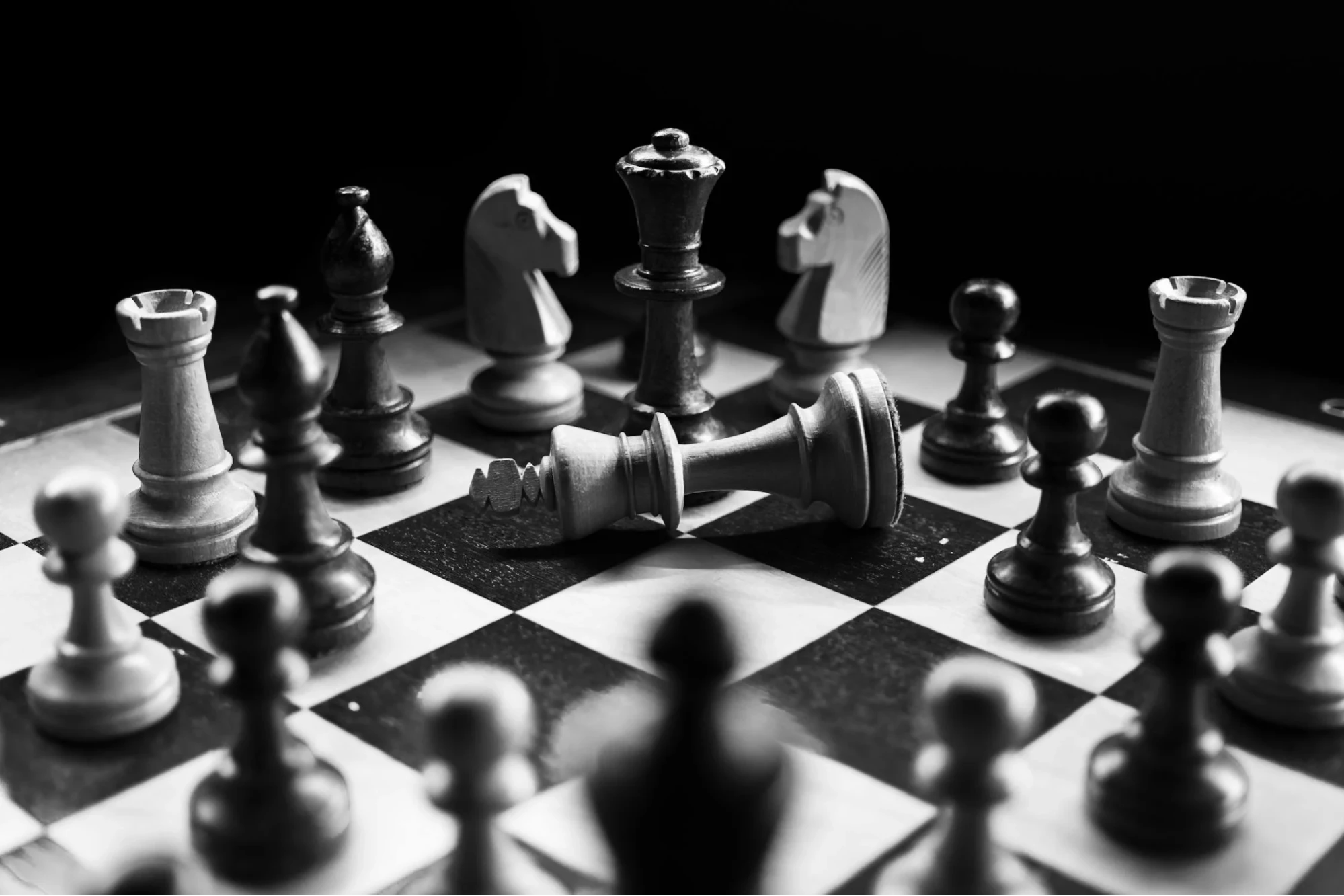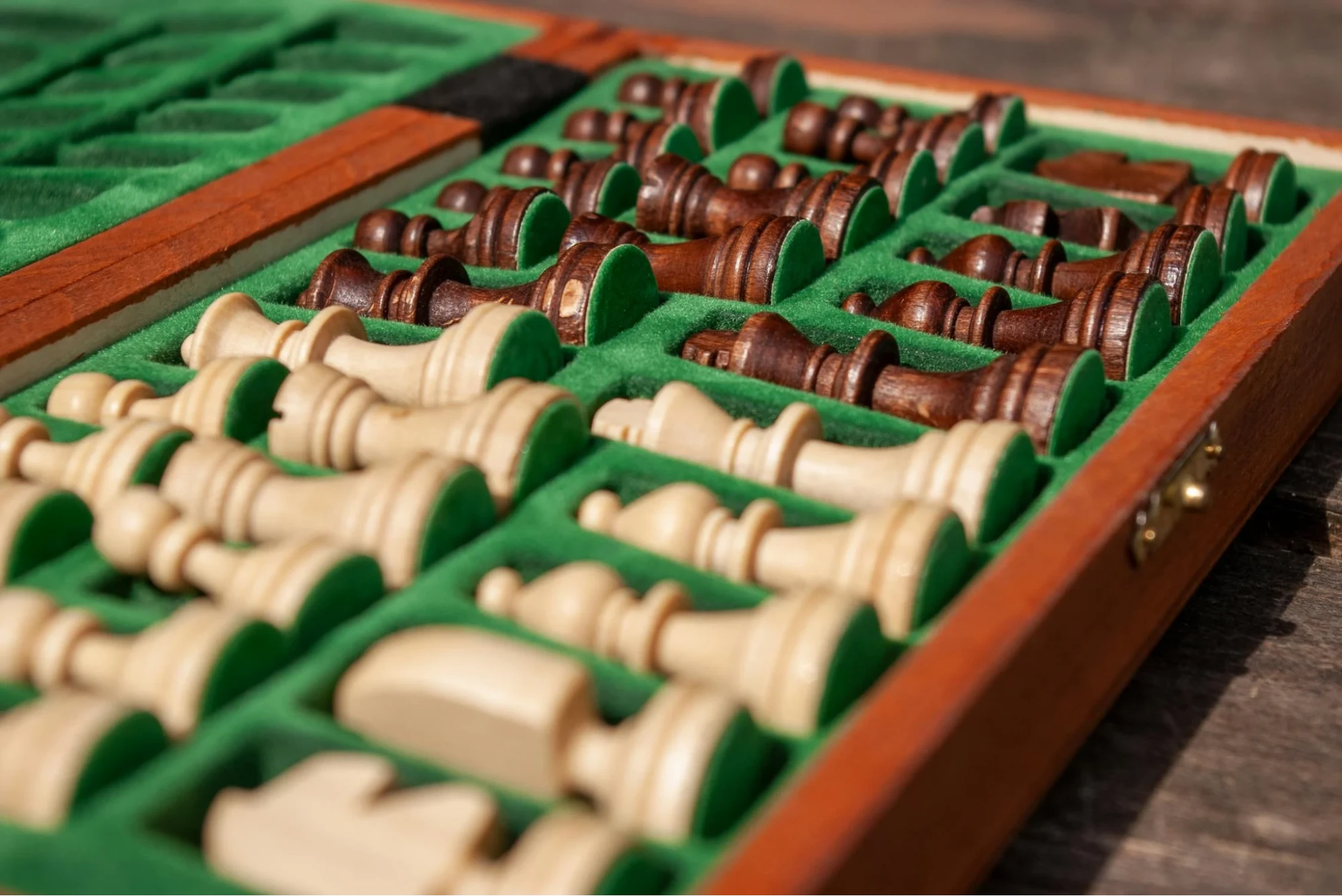When Was Chess Invented? Exploring Its Origins
Chess can often feel like a timeless game. It’s a staple that’s been with us for so long we can’t possibly imagine popular culture without it. Certainly, chess has been a go-to gaming option since ancient times, but like all games, it also has an origin story.
Rather thrillingly, the origins of chess are somewhat controversial. Unlike the black-and-white checks of a chessboard, the game's history is shaded with gray areas and uncertainties. In this article, we’ll help you get to know the game better by going back to the very start of chess, and considering how it came to be the game we know and love to play today.

Origins of Chess: A Timeline
When you’re playing a game of chess, you can think about little else than the pieces on the board and your next move. But where did those pieces come from, and who first made the moves you rely on to win?
Chess has a long and rich history which has helped cement its place as one of the most popular games in the world. Come with us as we look back at the complete timeline of chess throughout the ages.
The Ancient Origins of Chess
The controversies of chess origins largely stem from its unclear ancient past. As we’ll discuss in a while, people have officially played chess for more than 1500 years, but many experts believe that some iterations of chess have a far longer history.
Over the years, experts have discovered game pieces from locations like Russia and Central Asia which look to be far older than we’re led to believe. There’s also some evidence of pieces that vaguely resemble chess pieces in Ancient Egypt
While these early games are thought to be a distant relation to chess, which involved 100 squares and the throwing of dice, many still believe that they’re proof of chess in its very early forms.
15th - 16th Century: The First Official Records
Chess as we know it originated from an Indian game called Chaturanga which had a history dating back before 600 AD. It’s believed that Chaturanga spread to Persia in the 7th century, where changes to gameplay rules meant the game became known as Shatranji, an iteration that brought it much closer to the chess we play today. The earliest recorded games of chess were all played in Persia.
The Muslim world adopted chess after the Arab conquest of Persia, where it then spread to Europe via Spain and Italy. The modern rules of chess began emerging from Europe by the end of the 15th century when the first chess books were written by iconic figures like Ruy Lopez de Segura.
19th Century: A Competitive Age for Chess
While chess developed slowly throughout the 18th century, the 19th century was a time of great change for the game.
The 19th century particularly heralded major changes in the competitive nature of chess. While the history of chess is tied closely to competitive elements, official tournaments only came into existence through the 19th century, starting with the official world champion tournament of 1886. The first major international chess event to be widely reported took place in 1834 and was between popular French and British players of the time, Louis-Charles de la Bourdonnais of Paris and Alexander McDonnell.
Bouroinnais won the title and, after he died in 1840, was succeeded by Howard Staunton, who went on to endorse the introduction of new, uniform chess pieces known as the Staunton Pattern. These pieces became the standard set for competitions and tournaments, and are still considered the standard for tournament chess to this day.
Chess clocks also evolved during the 19th century, putting an end to games of chess that had previously run for up to 14 or more hours, and setting the stage for chess tournaments moving forward.
20th Century: Taking Chess Worldwide
The 20th century saw some of the most notable changes in modern chess, starting with the founding of the International Chess Federation FIDE in 1924, and the 1948 World Chess Championship, which saw competitions between legends like Mikhail Botvinnik and Garry Kasparov.
As competitive global chess continued to gain traction, computers also started making themselves known. The 13th world champion, Garry Kasparov, was the first to openly use computers for preparation and game study. In 1997, he became the first world champion to be defeated by supercomputer Deep Blue. Supercomputer Hydra also defeated Michael Adams, who was then seventh in the world ranking.
These defeats heralded a new age of chess, and are the early iterations of chess as we know it today, when players regularly utilize computer analysis and online play to perfect their games at either hobby or professional level.

Who Invented Chess?
Chess has evolved over the centuries and wasn’t necessarily invented by anyone. Rather, the game invented itself out of ancient gameplay, cultural changes, and historical advances.
Even though it’s not possible to credit any single individual with the invention of chess, certain individuals have played a key role in creating the game we know today. These figures include –
- Ruy Lopez de Segura: Lopez was a Spanish priest who became one of the first chess masters. He published one of the first books about chess in 1561, where he gave famed advice like his recommendation to play with the sun in your opponent’s eyes.
- Francois-Andre Philidor: Philidor published one of the first chess theory books in 1749, where he outlined ideas that players still use today, including the Philidor defense, and his theories about the importance of pawns during gameplay.
- Nathaniel Cooke: Nathaniel Cooke designed a new style of chess piece, the Staunton Pattern, which was launched with Jacques of London in 1849, and is still the standard set for modern tournaments.
- Wilhelm Steinitz: Steinitz became the first chess World Champion in 1866, and is considered to have been a world champion longer than any other player. He’s known as ‘the father of modern chess’.
Discovering Chess’s Birthplace
Chess was initially born from India’s Gupta Empire (600CE). Though many people also believe that the Ancient Egyptians played a game that closely resembled chess, the game’s most obvious origins certainly come from Ancient India.
Understanding India’s Gupta Empire
The Indian Gupta Empire was known as ‘The Golden Age of India’, and signified a period of peace and prosperity for Indian people. The Golden Age became known for many cultural advancements which, alongside early iterations of chess, included the decimal system, astrological understanding, and iconic stone-carved Hindu art.
The peaceful Gupta period came to an end when The Huna People invaded Gupta territory and caused significant damage. During this time, which was followed by an extended period of weak leadership and the eventual disintegration of the Indian empire, chess masters in European countries like Russia and Spain began publishing the first chess theory and instruction books. This is why we often consider chess to be a European invention.
However, Indian chess is currently facing something of a resurgence since Indian player Viswanathan Anand became a grandmaster with five world champion titles. Now, three Indian players hold a top 10 spot in world chess rankings.
The Evolution of Chess Through Time
Early Origins
The earliest iteration of modern chess, Chaturanga, was originally designed for play on an 8x8 board square. Play pieces closely resembled India’s military elements, which were –
- The infantry
- The elephants
- The cavalry
- The chariots
The game resembled modern chess in two primary ways. For one thing, Chaturanga also relied on different pieces which served different functions. The aim of Chaturanga was also to gain victory depending on the fate of one piece.
The name Chaturanga means ‘having four limbs (or parts) in Sanskrit, and was developed from the battle formation in an ancient Indian epic text. Chaturanga was originally a battle simulation game.
Chess as we Know it
Western Europe became the center of the chess world in the 18th century, and this is when the game reached wide acclaim in a form that’s more recognizable to modern players. At this time, the formerly military-based pieces developed their modern names, while refined rules introduced concepts like pawn promotion.
Modern chess continued to emerge throughout the 19th century, which saw the introduction of rules including the use of the Staunton Pattern during tournament gameplay, and standardized rules, such as the need for white to move first.
Competitive chess also began to gain traction in the mid-19th century and 20th century, when FIDE introduced chess competitions at an international level.
The Role of Computers
The introduction of chess supercomputers saw the most notably recent changes to the game. At the turn of the 21st century, online chess games, and formidable chess engines, have transformed the nature of competitive chess.
The Future of Chess is at our Fingertips
Chess may have rich origins, but it has an even more exciting future. The launch of the popular Netflix show ‘The Queen’s Gambit’ in late 2020 has particularly brought the attention of brand new chess players and audiences.
Whether you’re a pro or a total novice, chess allows you to tap into a game that carries with it remnants of the past, while still managing to embrace the future. Enjoy these benefits and more from the comfort of your own home when you play 24.7 Chess.
Seasonal Chess Games
More Games
Chess News
Disclaimer
DISCLAIMER: The games on this website are using PLAY (fake) money. No payouts will be awarded, there are no "winnings", as all games represented by 247 Games LLC are free to play. Play strictly for fun.

































